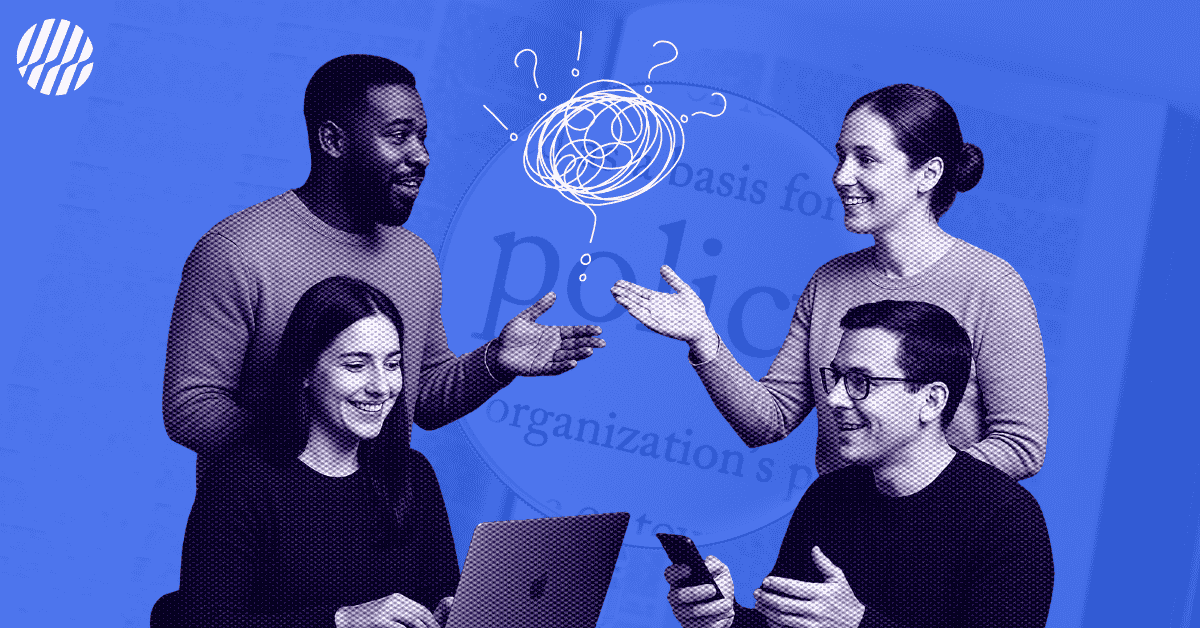The Context: A 4,000% Overnight Transformation
On September 19, 2025, President Trump fundamentally restructured America's skilled immigration landscape with a single proclamation. Effective September 21, 2025, the H1B visa program now requires employers to pay a $100,000 annual fee—a staggering 4,000% increase from the previous $2,500 cost. This policy transforms what was once an accessible pathway for global talent into what critics describe as a "luxury work permit" system.
The timing and magnitude of this change signal more than immigration reform—it represents a decisive pivot in America's approach to competing for global AI and technology talent. With just 48 hours' notice, the administration has effectively rewritten the rules for how America attracts, retains, and values international expertise in its most critical innovation sectors.
The Implications: Beyond Immigration to Innovation Strategy
Immediate Market Disruption
The policy's immediate effects rippled through global markets within hours. Indian IT giants saw their stock prices tumble—Infosys dropped 4.5% and Wipro declined 3.4%—while major U.S. tech companies issued urgent travel advisories to their H1B workforce. Microsoft and Amazon specifically urged their international employees to remain in the United States or return before the September 21 deadline.
The financial mathematics are stark. If all 85,000 annual H1B slots were filled under the new system, it would generate $8.5 billion in government revenue annually. For major employers, the burden is substantial: Amazon, holding 10,444 H1B visas, faces a potential annual cost exceeding $1 billion. The technology sector alone, representing 45% of H1B workers, confronts a collective fee burden of $13.5 billion.
Legal and Administrative Chaos
Immigration attorneys are preparing comprehensive legal challenges, arguing that the fee structure exceeds presidential authority since Congress only authorized cost-recovery charges, not punitive taxation. The one-day implementation timeline has created what legal experts describe as "considerable uncertainty for businesses, professionals, and students," with potential humanitarian consequences for families caught in transit.
Systemic Workforce Transformation
The policy effectively creates a two-tiered labor market where only companies willing and able to invest $100,000 annually per worker can access international talent. This fundamentally alters the economics of hiring, particularly impacting startups, small businesses, and academic institutions that have traditionally relied on H1B workers but lack the financial resources of tech giants.
The AI Workforce Impact: Critical Dependencies at Risk
The Numbers Tell the Story
Our analysis reveals the profound dependency of America's AI ecosystem on international talent:
- 70% of leading AI researchers in the United States are foreign-born or foreign-educated
- 70% of graduate students in AI-related programs are international students
- 55% of H1B workers in AI companies represent core technical talent
- 65% of AI startups have at least one immigrant founder
These statistics illustrate not just current dependency but the pipeline that feeds America's AI leadership. International students typically transition to H1B visas upon graduation, creating a direct talent pipeline that the new restrictions will severely disrupt.
Company-Specific Vulnerabilities
Major AI companies are among the top H1B sponsors, with Amazon, Microsoft, Meta, Apple, and Google collectively holding tens of thousands of H1B visas. AI-focused companies like OpenAI and Anthropic also rely heavily on this program, with many founded by immigrants who initially arrived on student visas.
The impact extends beyond large corporations to the startup ecosystem. With 325 AI startups having immigrant founders, the elevated cost barrier may prevent promising ventures from accessing the talent necessary for growth and innovation.
Research and Development Implications
The policy threatens America's research competitiveness. With 50% of computer science PhD recipients being international students and 60% of AI patents filed by foreign-born inventors, the restrictions risk undermining the research pipeline that drives technological advancement.
Immigrants in the AI US Workforce: The Foundation of American Leadership
Founding Leadership Concentration
The data reveals remarkable immigrant representation in AI leadership:
OpenAI: Founded by Elon Musk (South Africa), Ilya Sutskever (Soviet Union), and Wojciech Zaremba (Poland)Anthropic: Co-founded by Jack Clark (UK)NVIDIA: Led by Jensen Huang (Taiwan)AMD: Led by Lisa Su (Taiwan)
This represents 60% of top US-based AI companies having at least one immigrant founder, demonstrating the critical role of international talent in creating America's AI ecosystem.
Research Ecosystem Dependencies
In 2022, only 18% of top-tier AI researchers originated from the United States, ranking second to China's 47%. The U.S. increasingly depends on international researchers, with 38% of AI researchers in U.S. institutions being foreign-born. Despite various immigration challenges, 87% of foreign-born AI researchers remain affiliated with U.S. institutions, with stay rates exceeding 90% among students from Taiwan, India, Iran, and China.
Demographic Concentration
Indian professionals represent 72% of H1B holders in 2025, making them the most affected demographic. Chinese nationals comprise 11.5% of H1B recipients, representing significant expertise in AI research and development. This concentration means the policy will disproportionately impact specific talent pools that have been central to American AI development.
Why This Policy Has Merit: The Administration's Case
Protecting Domestic Workers
The Trump administration argues that the H1B program has been "deliberately exploited to replace, rather than supplement, American workers with lower-paid, lower-skilled labor." Data supports concerns about wage depression, showing H1B workers are paid 36% less than traditional workers in entry-level positions.
Computer science graduates face 6.1% unemployment and computer engineering graduates face 7.5% unemployment—more than double the rates for biology and art history graduates. Computer occupation unemployment jumped from 1.98% in 2019 to 3.02% in 2025, suggesting displacement effects.
Addressing Systemic Abuse
Research indicates that without H1B competition, wages for American computer scientists would have been 2.6% to 5.1% higher and employment 6.1% to 10.8% higher. The policy aims to curb practices where companies "close their IT divisions, fire their American staff, and outsource IT jobs to lower-paid foreign workers."
Revenue Generation and Economic Logic
Commerce Secretary Howard Lutnick stated the fee will generate revenue to "cut taxes and pay down national debt" while forcing companies to determine if workers are "valuable enough to have $100,000 a year payment to the government." This creates a market-based mechanism for allocating scarce visa slots to the highest-value applications.
Tailwinds: Supporting Market Forces
Political Momentum
The policy enjoys backing from conservative lawmakers who view it as "putting American workers first." Senator Jim Banks introduced complementary legislation raising minimum H1B salaries to $150,000, suggesting broader political support for similar measures.
Labor Union Alignment
Some labor organizations support restrictions, arguing that H1B abuse "undermines both economic and national security" by creating unfair wage competition. This cross-party support strengthens the policy's political foundation.
Public Sentiment Shifts
Growing public concern about tech layoffs coinciding with H1B hiring provides political cover. High-profile examples of companies announcing 15,000 layoffs while approving 5,000 H1B workers have created negative public perception around the program.
Administrative Flexibility
The Department of Homeland Security retains discretionary waiver authority for cases deemed in the "national interest," providing flexibility for critical skills while maintaining the policy's overall framework.
Headwinds: Challenges and Resistance
Legal Vulnerabilities
The primary challenge lies in legal authority. Immigration attorneys argue the fee structure exceeds presidential power since Congress only authorized cost-recovery fees, not punitive charges. Multiple lawsuits are expected, potentially creating extended legal uncertainty.
Competitive Displacement
International comparison reveals the policy's competitive disadvantage. While the U.S. now charges $100,000, Canada charges $825 for equivalent programs, Australia $1,265, and the UK $1,408. This dramatic differential may drive talent to competitor nations.
Economic Disruption Risks
NASSCOM warns of "ripple effects on America's innovation ecosystem" and potential humanitarian consequences. The policy could "disrupt families" and create "considerable uncertainty" for businesses planning long-term projects.
Industry Opposition
Major tech companies oppose the restrictions, with industry leaders arguing it will "crush small businesses and startups reliant on diverse talent." The sudden implementation timeline creates operational chaos for companies with existing commitments and project timelines.
Innovation Ecosystem Concerns
Universities warn that with two-thirds of graduate students in AI programs being international, restrictions could undermine America's research competitiveness in critical technologies. This creates longer-term risks to technological leadership.
Strategic Recommendations for Companies
Immediate Actions (Next 30 Days)
Conduct Workforce Audits: Assess current H1B dependencies and identify critical positions that justify the $100,000 investment. Prioritize roles with highest strategic value and irreplaceable skills.
Develop Contingency Plans: Create alternative staffing strategies including remote work arrangements, international office expansion, and accelerated hiring of domestic talent.
Legal Preparation: Engage immigration attorneys to explore waiver applications for critical national interest cases and prepare for potential legal challenges to the policy.
Medium-Term Strategy (3-12 Months)
Talent Pipeline Diversification: Expand recruitment from domestic universities and develop partnerships with community colleges and coding bootcamps to build alternative talent sources.
International Expansion: Consider establishing research and development centers in countries with more favorable immigration policies, such as Canada, Ireland, or Singapore.
Compensation Restructuring: For roles that justify the fee, restructure compensation packages to account for the additional cost while maintaining competitiveness.
Long-Term Adaptation (1-3 Years)
Innovation Ecosystem Development: Invest in domestic talent development through university partnerships, internship programs, and technology education initiatives.
Strategic Partnerships: Develop relationships with international companies and research institutions to access global talent pools through alternative arrangements.
Policy Engagement: Participate in industry coalitions advocating for evidence-based immigration reform that balances domestic worker protection with innovation needs.
Sector-Specific Considerations
AI Companies: Focus on securing waivers for breakthrough research positions and consider distributed team models that leverage international talent remotely.
Startups: Explore alternative visa categories (O-1, L-1) and consider international incorporation strategies that provide access to global talent while maintaining U.S. market access.
Large Enterprises: Develop comprehensive global mobility strategies that optimize talent allocation across international offices based on visa availability and costs.
Conclusion: Navigating the New Reality
The $100,000 H1B fee represents a fundamental shift in America's talent competition strategy. While addressing legitimate concerns about domestic worker displacement and program abuse, it creates significant risks to AI leadership and innovation competitiveness.
Companies must adapt quickly to this new reality through diversified talent strategies, international expansion, and focused investment in domestic workforce development. The policy's ultimate success will depend on whether the benefits of domestic worker protection and revenue generation outweigh the costs of reduced innovation capacity and competitive disadvantage.
For America's AI ecosystem, the stakes are particularly high. Success in artificial intelligence depends on access to global talent pools, collaborative research networks, and diverse perspectives. The challenge ahead is maintaining technological leadership while navigating this new, more restrictive immigration landscape.
The Global AI Forum will continue monitoring policy developments and their impacts on international AI collaboration, providing data-driven analysis to inform both corporate strategy and public policy decisions.

.png)


.svg)